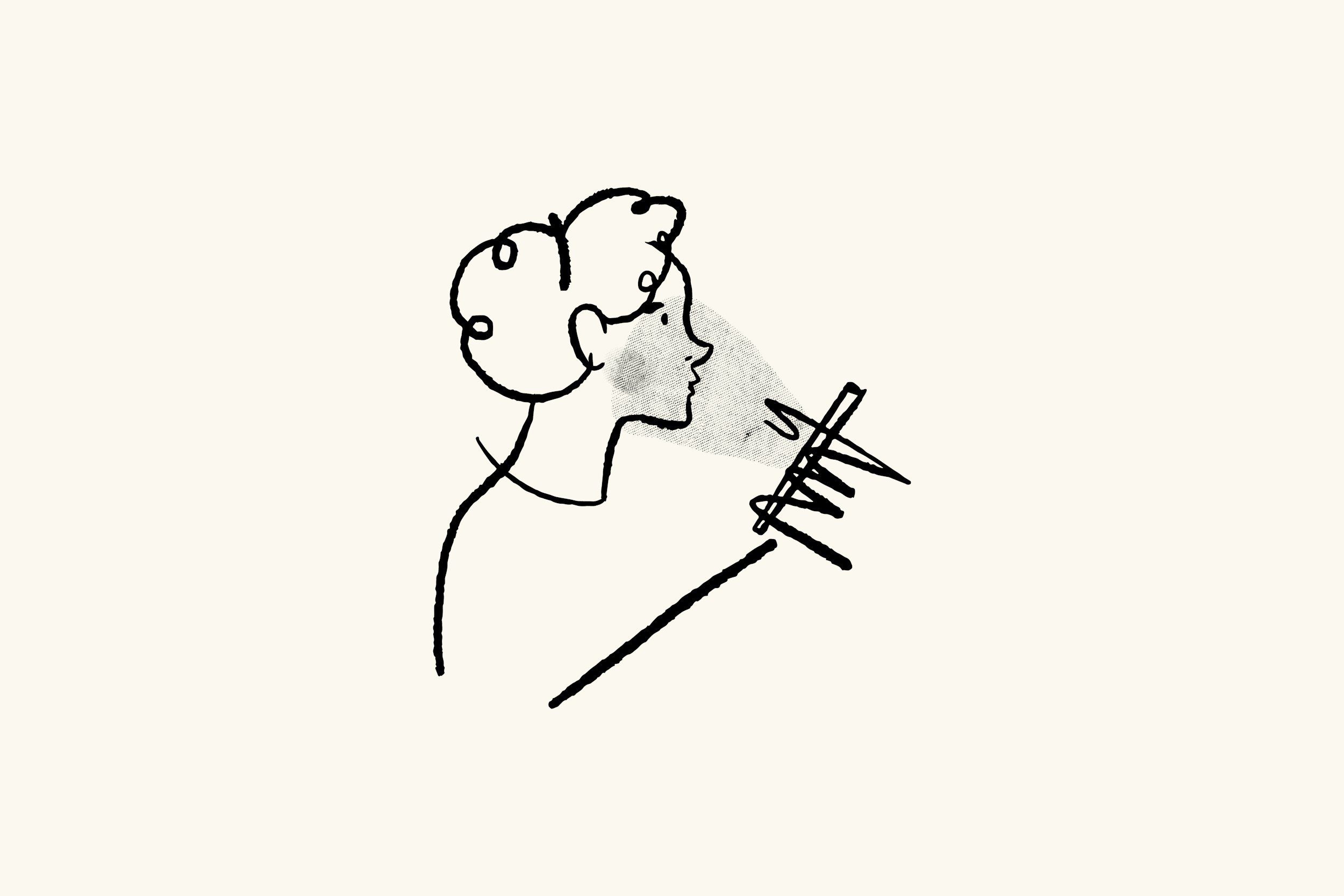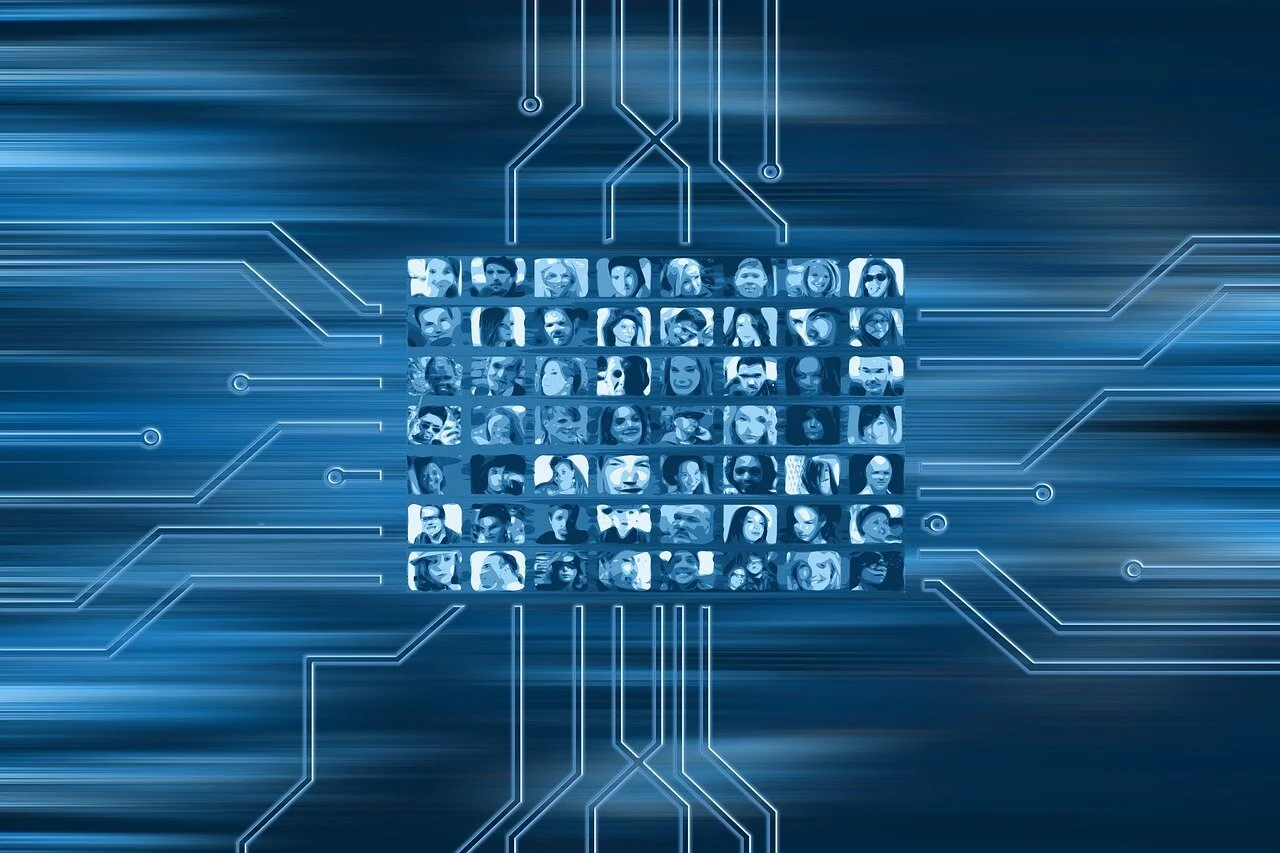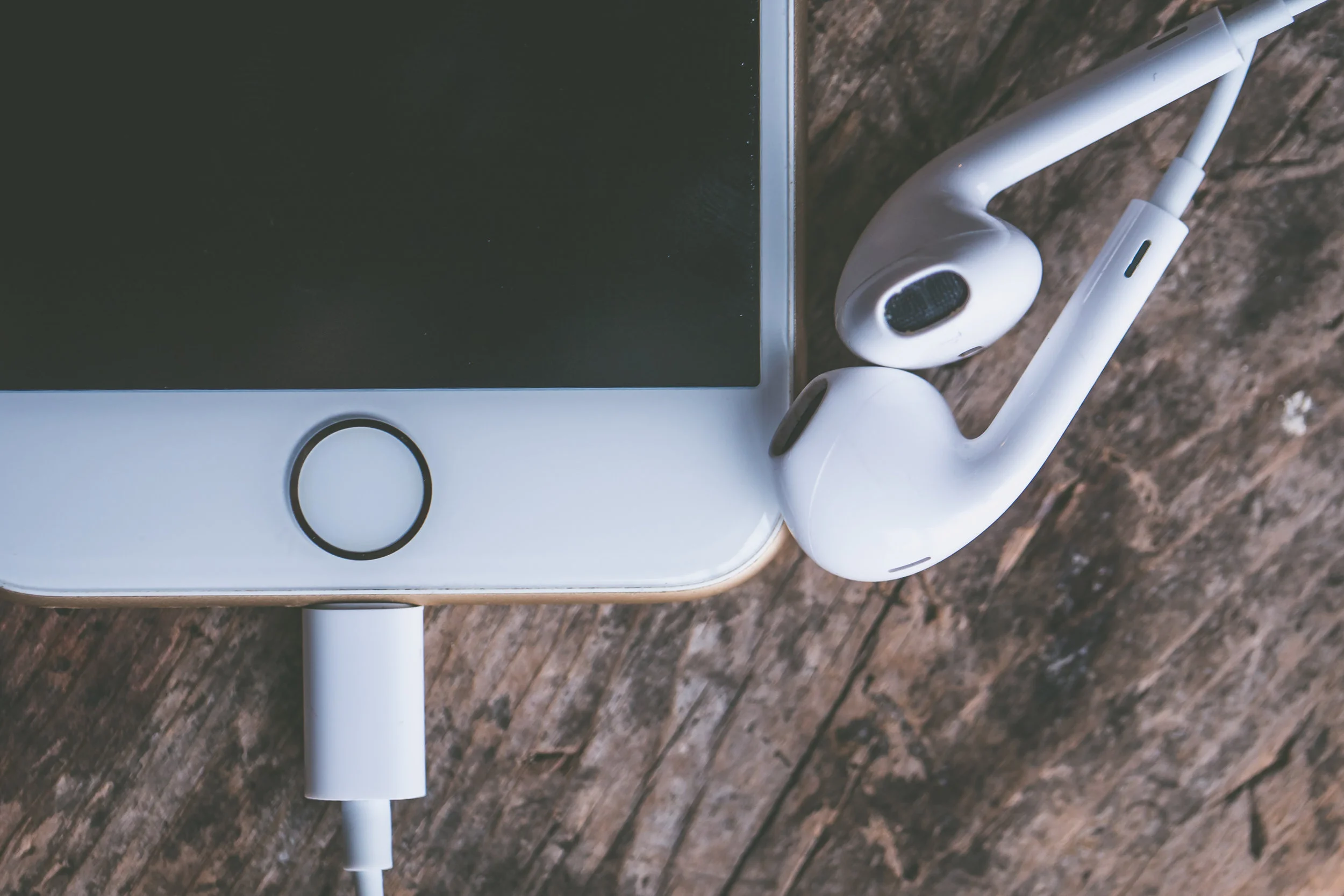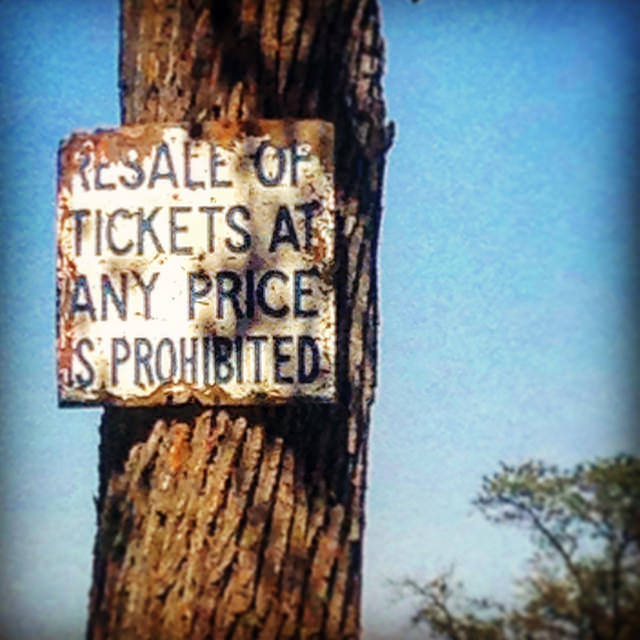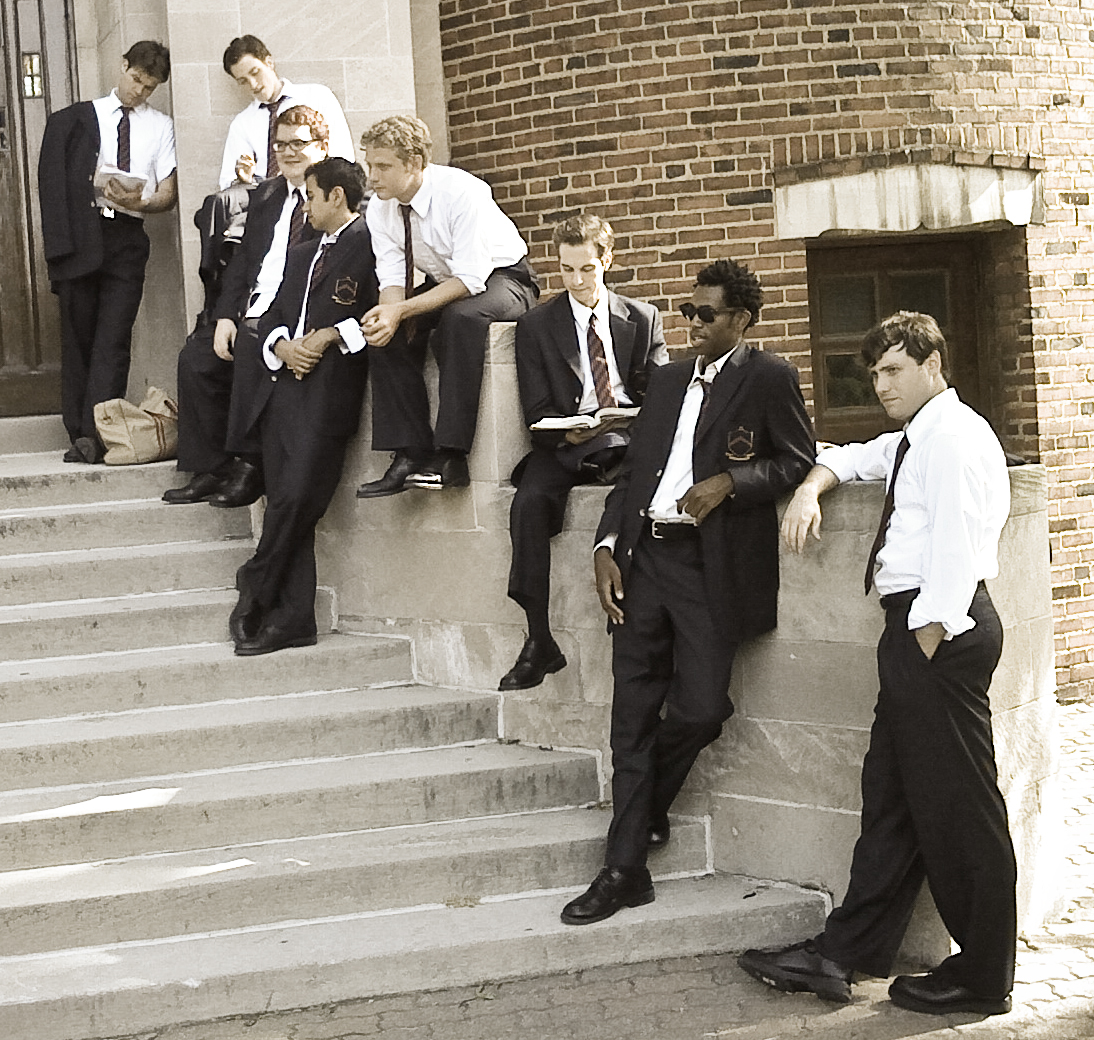Deepfake is a merge between 2 terms which are Deep Learning and Fake. It is a technology that includes teaching software to memorize faces, expressions, movements and even voices of a person so that the machine can later project that information onto another person. Despite its common inappropriate use, Deepfake technology can surely benefit the entertainment industry, specifically film production. This comes with further consequences to be considered by various parties.
Nonprofit Organizations can Join the Digital Streaming Revolution Too
Ticket Scalping: How much would you pay to see the Nutcracker?
The Future of Net Neutrality and What it Means for the Arts Community
 Of all the public policy issues relating to the intersection of arts and technology, arguably none is more important and vital to our continued freedom and success than net neutrality. A slew of recent changes and lawsuits have the potential to fundamentally change the way we use the internet, and the arts community stands to be greatly impacted.
The idea behind net neutrality is simple: keeping the internet open and treating all data equally. The word “neutrality” means strictly that: whether you are searching for information on Google, streaming video on Netflix or using social networking tools, all of those data “packets” are treated equally and allowed to proceed at the same speed. This is the very idea of the “open internet” that so many in the arts community advocate and support, and it has helped foster innovation and evolution in many different fields, including the arts.
Of all the public policy issues relating to the intersection of arts and technology, arguably none is more important and vital to our continued freedom and success than net neutrality. A slew of recent changes and lawsuits have the potential to fundamentally change the way we use the internet, and the arts community stands to be greatly impacted.
The idea behind net neutrality is simple: keeping the internet open and treating all data equally. The word “neutrality” means strictly that: whether you are searching for information on Google, streaming video on Netflix or using social networking tools, all of those data “packets” are treated equally and allowed to proceed at the same speed. This is the very idea of the “open internet” that so many in the arts community advocate and support, and it has helped foster innovation and evolution in many different fields, including the arts.
Many of the projects we have highlighted here on the blog in the past week, including art.sy, the Google Art Project and the Tate Trumps iPhone app, are made possible in part because of the freedom that net neutrality provides. Whether it’s an artist finding new outlets for their creativity, using the internet to connect buyers and sellers, or arts organizations using social media to find new fans, the increasing merger between the arts and technology communities is absolutely dependent on the idea that the internet should be free, open and neutral. Doing away with the concept, or diminishing that freedom, would have a severe negative impact on the arts community.
Thankfully, some recent changes have been put into place to strengthen net neutrality. Recent regulations approved by the Federal Communications Commission (FCC) are set to take effect November 20, 2011. These regulations include prohibiting broadband providers from blocking lawful web traffic, requiring a greater deal of transparency from broadband providers regarding their network practices, and, most importantly, requiring that broadband providers not discriminate in transmitting lawful network traffic over consumers’ internet service. You can read more about the new regulations on the FCC’s openinternet.gov website.
While the regulations are not perfect, and do not go as far as many open internet advocates would have liked (for example, there is still some ambiguity regarding the regulations surrounding wireless networks, which the FCC claims is a newer technology and requires more time to appropriately measure how much regulation is required), they are a welcome step in the right direction.
Before we get to November 20 however, several lawsuits have been filed in the past few months, seeking to block these regulations. And to no one’s surprise, it has been the telecommunications companies that have sought to block the regulations from being put into place, while at the same time claiming that they are the true parties interested in keeping the internet “open.”
The most recent lawsuit comes from Verizon, one of the largest telecommunications companies in the country, who are claiming that while they are committed to an open and secure internet, they object to what they call “sweeping” regulations that apply to the entire telecommunications industry. This is not the first time Verizon has filed suit against the new regulations; they also sought to remove the new regulations earlier this year, but the case was thrown out in April because the regulations were not published in the Federal Register until this past August.
The lawsuit is pending, and whatever decision is reached by the courts will have a lasting impact on the future of internet freedom. Even if the FCC and open internet advocates prevail, the fight by the telecom companies against the new regulations will surely continue, as they seek to continue their years-long crusade against the open internet and restrict whatever types of internet data they see fit.
We here at Technology for the Arts have long advocated for net neutrality and communicated why we feel the issue is of vital importance, and as the fight over the open internet heats up, it’s important that when we talk about issues of arts advocacy and what issues are at the top of our agenda, that we include net neutrality. While the recent regulations approved by the FCC are a welcome step forward, there is a still a lot of work to be done to make sure that the future of the internet remains open and neutral. You can find out more about net neutrality at openinternet.gov, and we encourage you to share the information with others in the arts community.
The arts community has long benefitted from net neutrality, and the continued innovation we have seen in recent years is dependent on it staying that way.
(Photo: CC by markrabo)
Fair Use of Dance-Related Materials: A Discussion
In response to CAMT's "Social Media, Video Footage and the Law" white paper, Lisa Niedermeyer from Jacob's Pillow Dance Festival contacted us with a related video about fair use as it relates to dance-related materials. As the white paper mentions, fair use can be a nebulous concept as far as what, how, and how much copyrighted material can be legally used. The video is a more detailed discussion of The Dance Heritage Coalition's published statement "Best Practices in Fair Use of Dance-Related Materials". It features curators, archivists, documentary filmmakers, librarians and other collectors of dance-related materials discussing what they currently regard as reasonable application of the Copyright Act's fair use doctrine.
What you need to know about viral video and the law
![]() Technology in the Arts has just released a publication reviewing legal issues surrounding using video footage online. (Access the PDF publication here.)
Whether you are in marketing, development, education or operations, chances are that you will encounter some kind of contract or legal issue involving performance footage, either online or offline. This white paper serves as a survey of current industry trends and practices, as well as a guide to those exploring the ever-changing landscape of online media and the intellectual property and union issues associated with it. While nothing can replace the advice of a good lawyer on legal issues, this guide can alert you to potential problems while you are planning online media campaigns involving performance footage.
Technology in the Arts has just released a publication reviewing legal issues surrounding using video footage online. (Access the PDF publication here.)
Whether you are in marketing, development, education or operations, chances are that you will encounter some kind of contract or legal issue involving performance footage, either online or offline. This white paper serves as a survey of current industry trends and practices, as well as a guide to those exploring the ever-changing landscape of online media and the intellectual property and union issues associated with it. While nothing can replace the advice of a good lawyer on legal issues, this guide can alert you to potential problems while you are planning online media campaigns involving performance footage.
Do you have a story about issues you've had distributing performance footage online? Please share below.
How to Opt Out of the Facebook Mistake
Facebook’s privacy settings and the wave of controversy they caused have created a new level of user awareness when it comes to personal information on web-based technologies. The Palo Alto giant decided to roll out a new program where people were automatically opted in to share their personal information across the web that they had saved on Facebook. Facebook coupled this roll out with a poor explanation of what it was, who it was affecting, and how users could manage it. The convoluted privacy controls and constitutionality were hit hardest, but they were not the real problem in this case. The actual problems here lie in communication and choice. I agree with Mark Zucherburger that a more open Internet is a better Internet and that the more people share, the more social the Internet will become. Unfortunately, sharing ones personal information needs to be a choice and users need to understand how and why they are sharing their information. “Because it’s good for you” is not an acceptable answer for most people.
Arts organizations in the US need to take this Facebook quagmire and use it as a case study for their own e-marketing and e-mailing policies. Communication and choice will lead to stronger web based support and a happier constituency.
Things arts organizations should keep in mind:
- E-mail and e-marketing should almost always be opt in for supporters
- Organization should explain why and how they will be contacting people
- If possible, users should be able to customize what they receive
- Opting in and opting out should be very easy and take little effort
- Safety measures on how the organization will protect a users personal information and contact information should be clearly stated on the website and reiterated in the first e-contact
Opt in policies are generally the most effective and considered to be best practice. This is where Facebook made their fatal mistake and where arts organizations need to ensure they are excelling. Organizations only want people to receive information that want to receive it. By allowing people to opt in to programs, the organization is letting the individual take responsibility and targeting individuals who want more contact with the organization.
Once someone has opted in to e-marketing and/ joined the e-mail list for an organization, they should be able to choose what they want to receive information about. Maybe they only want information on ticket sales or a certain type of programming. Maybe they only want the annual report and education programming. Being able to customize what information they receive will help keep them more engaged with the organization and make them less likely to opt out or stop reading e-blasts.
Finally, people should feel safe giving an organization their e-mail address and personal information. With all of the information sharing, spamming and possibilities for profit, consumers are very wary of giving away any contact information these days. Post on your website and in the confirmation e-mail how you are protecting their identity and their personal information. These practices will help any organization build a strong e-mailing list and e-marketing campaign.
Is this thing on?? Important news for performance spaces that use wireless microphones
The FCC officially decided in January to clear the "white space" that exists at the 700 MHZ frequency for particularly designated usage. While the FCC fielded arguments from big cellular and broadcasters in determining white space authorization, "unauthorized users" of microphones operating on a 700 MHZ frequency were depicted as "squatters" and intruders, since many have, technically operated in this space illegally for years. Unfortunately, this may have a serious impact on venues that use wireless microphones. Theaters, concert halls, stadiums, and others, will no longer be able to use technology that uses the 700 MHZ frequency. The FCC is giving organizations that use mics on the 700 MHZ frequency until June 12 to transition to another frequency.
This means that you need to know if this is something you need to know. This could be hugely expensive to organizations that have equipment that operates at this frequency. If nobody in your organization knows this, or knows where the equipment manuals are, you can check the FCC's website.
If you find that your equipment will have to be replaced, try contacting the manufacturer and/or the retailer where it was purchased. Some companies are being very good about offering discounts on new equipment or switching out the old free of charge, according to sources at a conversation at Arts Advocacy Day.
For a complete story and many additional, helpful links, see The Future of Music Coalition's blog.
Non-Technical Difficulties: Unions Block Online Stream of Live Theater Performance
The "boys" of PICT's "The History Boys." Photo courtesy of PICT.
In 2006 Stephanie Riso, Operations Director of the Pittsburgh Irish and Classical Theater (PICT), recognized the limitations that performance space imposed on ticket sales for her popular Cabaret Pittsburgh project. She considered ways to expand the audience of the musical revue without finding a new location or having to take the show on the road, and landed on the possibilites afforded by internet streaming.
Riso discovered that, with the exception of the Kennedy Center's free online performances of Millennium Stage musical acts, there was no precedent for streaming live performance online. With fellow Carnegie Mellon alumnus Alex Geis, and his company 21 Productions, Riso developed a live stream for Pittsburgh Cabaret. Upon seeing that "the (sound and video) quality was amazing, " she determined that she could use this technology to live stream PICT's theater productions.
“PICT’s long-term goal is to create a new revenue stream that will help to sustain the organization and live theatre into the future," explains Riso. Like so many theaters, PICT is small, limited by region and budget, and cannot tour under the Actors Equity SPT contract. So Riso conceived LIPLO™ (for "Live In Person and Live Online"), a hub where tickets could be sold to online streams of live performances and watched in real time. What was once just a dream of live theatrical streaming is -- almost -- a reality.
"Online presents great promise to theatres, but only if there is something worth watching; no one goes to a theatre website to ‘hang out’ and read about the upcoming shows. They go to the website simply to get the necessary information so they can attend a performance if they happen to live in that city. But, if there is a place online where a person can go and be entertained with a high quality experience – that changes the conversation and opens up potential ad revenue and customers/patrons,” explains Riso.
Last Saturday was to be PICT's inaugural, open-to-the-public, free LIPLO™ test stream (of PICT's production of Alan Bennett's "The History Boys"). Unfortunately, with less than a week to go, AEA and AFTRA could not agree on contract terms, and Riso had to pull the plug on the stream. "[W]e had secured the rights from Alan Bennett (the author) plus Fox, who owns the film, new media and broadcast rights – which was a very big deal. . . .Knowing that Actors Equity would be the biggest obstacle, I approached them in February 2009 to start the conversation. Their initial email response was that at the time they were not giving permission for actors to participate in live streaming. However, upon further conversations with their filming and taping department they encouraged me to talk with AFTRA (American Federation of Television and Radio Artists) and were completely open to the possibility – although Actors Equity kept stating they would likely expect 2 weeks contractual salary for the actors plus rehearsal which seemed out of sorts with the proposed free trial project. When AFTRA finally negotiated a favorable conclusion and all actors agreed, Actors Equity backed off and was not willing to move forward."
Riso is now caught in a Catch-22 in which she cannot have a bargaining conversation with the unions about money without data collected from test runs--which cannot proceed until the unions agree to allow the stream.
Provided the unions agree to allow LIPLO™ to proceed, theaters around the world may be able to implement this technology to expand their audiences. This may prove a popular method for watching theater, and precisely the tool that performing arts need to find new ways to make money and raise awareness of the art. Once the unions can get on the same page, "the only thing that stands in the way from any organization using LIPLO™ is whether or not the organization has the permission or right from the author, actor, designer, etc to live stream the work." If organizations are interested in implementing LIPLO™, the LIPLO™ team would "adjudicate the organizations and their work prior to acceptance within LIPLO™ to ensure there is a level of expertise and quality for the LIPLO™ audience." Following that, LIPLO™ has an all-inclusive team that would work with the organizations to put their work online.
Though Riso is confident that the technical components of the stream are dependable (it has undergone at least 15 trials without a hitch, and Geis will be online for every stream to troubleshoot viewers' problems via messenger), additional details rely on feedback from viewers of what were to have been three practice streams (including "The History Boys," PICT has streams planned for each of their season's final productions). For example, would viewers prefer a single or multiple camera feed? Is Paypal the best way to sell tickets to online streaming? Would the tickets be priced lower than in-life tickets? How will advertisers most effectively be placed during the stream? Will advertisers be local or could they be national and international? And most importantly, will this truly reach a new viewing demographic?
It is this writer's hope that the unions recognize the need to update contracts to open the possibility of alternative methods of viewing live theater. It increases exposure for all the artists involved in a show, and greater exposure could lead to greater demand for the artists. The tools are in place to expand audiences beyond the Baby Boomers, and hits the Millennials, and even Gen-Xers, where they live--online. In theory LIPLO™ is the perfect marriage of technology and art, and could do what simply expanding or altering marketing approaches may not: it could get new people watching live theater.
To view Riso's Quicktime community address, and to read additional information, including her request for supporters to contact these unions, visit the LIPLO™ website and follow the simple log-in procedure.
Update: AEA refused to discuss the matter with me. Spokesperson Maria Somma replied, "As you may have read in the media, Actors' Equity Association will not comment on the situation in question."
Protected? Online Content, and its Abuse
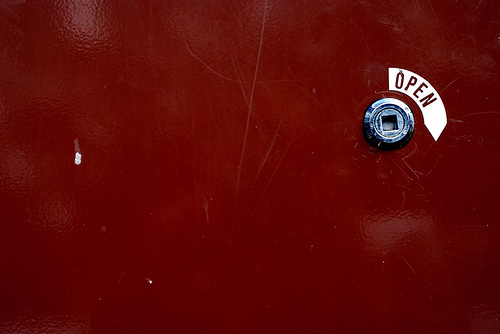 photo by Brittney Bush Bollay
photo by Brittney Bush Bollay
Years ago, while editing a free-press magazine, I found that the closely-guarded text of a mediocre article that the Publisher himself had submitted as his own (and rejected my suggestions to improve) was a verbatim reproduction of a local business' website copy. I confronted the Publisher, who told me I was overreacting, and that the site owner "would never know."
I resigned that month. (The magazine closed its doors shortly thereafter, due to mismanagement.)
So imagine my reaction when I read Waldo Jacquith's Virginia Quarterly Review blog post demonstrating that Wired editor Chris Anderson's latest book, Free, is full of paragraphs that appear to be lifted, verbatim and without attribution, from Wikipedia. [Though Jacquith is careful not to accuse Anderson explicitly of plagiarism, Edward Champion has no such scruples.] While the actions of my previous employer were inexcusable, this much more extreme indiscretion by a well-respected editor of a major magazine, whose book is being published by Hyperion, is far more alarming.
Jacquith's column sparked a heated debate among its readers, some praising Anderson's "admission of guilt" (essentially, "Oops! I had footnotes but the publishers didn't like how it looked and I didn't know the best way to properly cite in a different way, and then I forgot to change it,"), others leveled harsh criticism against Anderson, who really should know how to cite a source.
But at the heart of the matter, it seems, is the "confusion" that surrounds using content available online to substantiate and support an author's arguments. Some Anderson defenders commented that, as an encyclopedia, Wikipedia did not need to be cited (and I urge them to read The Creative Commons Deed--which covers Wikipedia content and states "You must attribute the work in the manner specified by the author or licensor [but not in any way that suggests that they endorse you or your use of the work.]") Others, like Zito van Dijk, commented, "If a 'taking over of words' is very long and substantial, wouldn’t that mean that Chris Anderson does not quote, but takes part in the Wiki writing process? According to GFDL, this makes his book to be copyleft, and everyone has the right to copy it freely?"
Ahhh, the GNU Free Documentation License. Like the Creative Commons Attribute, or the Educational Community License, it is a legal guideline to enable public works to retain the original author's integrity. The thing that always worries me about Creative Commons and the like is that, to the layperson, these licenses may seem esoteric (and, consequently, not very important--like the "I have read and Agree to the Terms" checkbox, that minor inconvenience you check so that you can get to the good stuff). Thus arise situations like the now-notorious lawsuit against Virgin and CC, the result of someone online not understanding what it was, exactly, that the license was permitting.
Interestingly, I was just in the midst of playing with a couple of online tools that carry either Creative Commons or Educational Community licenses. The first of these tools is Ficly, the second incarnation of Ficlet, a sort of online writing group. On this site anyone can contribute writing samples, poems, etc., have them read by others, modified, and responded to. The second is Sophie, described by creators as a tool whose "goal is to open up the world of multimedia authoring to a wide range of people, institutions, and publishers. In so doing, Sophie redefines the notion of a book or academic paper to include both rich media and mechanisms for reader feedback and conversation."
Great resources both, each offers participants (or even audiences) the opportunity to receive a lot of information, engage in vibrant discussion or creation, truly collaborate. So who, at the end of the day, gets to walk away with "ownership?" Is there the potential for significantly increased licensing breaches as there are ever-proliferating ways to get the public at large involved in sharing ideas, words, video, photos, etc? And though I believe that anyone involved in publishing anything to the web should arm himself with knowledge about his rights regarding that content, I believe that most people don't really know what their rights are.
I think most of us learned about plagiarism in high school or college. But for those of us who are either older than the internet or who had only limited access to it during our time as students, there appears to be a massive gap in our collective understanding of what governs web content. In schools I hope that curriculums have been updated to address various online licenses that apply to work that they will encounter. For the rest of the populace, I think it's vital that anyone out using the web is able to access a comprehensive source, like CC's fantastic primer, before using sites like YouTube or copying a Flickr picture into a PowerPoint presentation. It's too easy to generate, borrow, modify, and distribute without really knowing the implication of these actions. A person can sign up and start posting content without ever realizing that they may have given permission for anyone to use their work, as long as they are given credit for having generated it. There are no doubt many people using others' work without attribution, blissfully ignorant of the fact that they are technically breaking the law. (Though, of course, there are many who do it knowingly, as this artist's experience attests. This blog has linked to her in the past, in an article about the dangers and benefits of Print-on-Demand.)
We need to hold high-profile individuals (especially, considering that their audience is much broader!) to the same standards that we hold the little people, and not accept a mere apology. Look at Jammie Thomas-Rasset, whose (ignorant or fully-informed) online lawbreaking has been made a serious example. Why shrug off Anderson's disregard for an equally binding law, and accept Hyperion's unwillingness to alter the book release date to correct the "mistakes" in the hard copy?
And for goodness sake--if you are going to use a source like Wikipedia as the foundation for an argument, CHECK YOUR FACTS. Don't do like Anderson, and paraphrase incorrect information. Ouch.
Addendum: Article in the Guardian that both reviews Anderson's book, addresses the phenomenon that allows Google to pay nothing for art, and touches (too lightly, I feel!) on Anderson's liberal unattributed-quoting.
Blogging on the Shoulders of Giants
Creative Commons licenses provide the ability to modify the terms of the copyright on your intellectual property.
Some times Copyright can be too restrictive when you would like to share your work with the world.
For those of you who are unfamiliar with Creative Commons licensing, this video helps to explain some of the ways in which it allows someone to publish their work somewhere in between All rights reserved and No rights reserved. This method of copyright allows the creator of the work to decide how it can be used by others, if it can be used commercially, sampled, remixed, or built upon. By using a Creative Commons License creators are able to maintain some rights while allowing others greater access to the work than the regular Copyright would allow.

FairShare is a free online application that allows you to track the usage of your creative commons licensed intellectual property, making it possible for people all around the world to reuse content while still attributing it back to the original creator. Currently FairShare works for any text based content that is available to the public via RSS feeds. This means any blog posts, essays, cookbooks, and anything as long as it is text and available as via RSS. According to Plagiarism Today's Jonathan Bailey, FairShare Developer Attributor is also gauging interest in a FairShare for photos and videos as a possibility for a future service that would allow users to track the use of images and other media beyond just text content.
FairShare begins by asking you to choose from a list of available Creative Commons Licenses.
- Attribution
- Attribution Non-Commercial
- Attribution No Derivatives
- Attribution Share Alike
- Attribution Non-Commercial No Derivatives
- Attribution Non-Commercial Share Alike
Once you've registered your blog or other RSS feed, FairShare searches to find instances of your content on other sites, and then displays the different pages that have reused your work and how that reuse of your content compares to your license conditions. The sites using your content are displayed in your FairShare feed that can then be accessed through a feed reader such as Google Reader, or any number of other RSS readers.
This is an amazing new tool that will allow anyone who is concerned about how their intellectual property is being used to track and influence how that content is being shared.
As we go into the weekend, I leave you with this awesome Video Mashup, "The Mother of all Funk Chords" that was created entirely from clips available on Youtube.
Creative Commons - Building a Shared Culture
A few weeks ago, the topic of Creative Commons came up during a technology workshop I was leading, and a number of attendees were unaware of it and its potential for rethinking the way we approach the copyright of intellectual property. Recently, Creative Commons released a short video by renowned filmmaker Jesse Dylan, known for helming a variety of films, music videos, and the Emmy Award-winning “Yes We Can” Barack Obama campaign video. The video “A Shared Culture” uses interview footage with leading thinkers behind Creative Commons to talk about the organization's mission, but perhaps the most impactful aspect of the video is its incorporation of photographs and music with CC licenses.
Next week at the National Arts Marketing Project Conference in Houston, CAMT's own Brad Stephenson will lead a panel session on the ways in which artists and arts organization may benefit from utilizing Creative Commons licenses in their work. If you're at the conference, be sure to check it out.
Podcasting: Keep it Legal
I was recently directed to a great guide to ensuring that your podcast is legal. The Podcasting Legal Guide is hosted on the Creative Commons wiki and provides an overview of legal information every good little podcaster should know and understand. The Guide was created by the following parties:
Colette Vogele, Esq. Vogele & Associates http://www.vogelelaw.com/index.html Stanford Center for Internet And Society http://cyberlaw.stanford.edu/
Mia Garlick Creative Commons http://creativecommons.org/ Stanford Center for Internet And Society http://cyberlaw.stanford.edu/
The Berkman Center Clinical Program in Cyberlaw http://cyber.harvard.edu/
Also, remember that we have a Podcasting Fundamentals Tutorial available that will teach you the basics of creating and publishing your very own podcast.
Greater Pittsburgh Arts Council Presents an Arts Law Clinic
Are you a Pittsburgh-based artist or arts administrator with a legal question about your work? Take your questions to the Greater Pittsburgh Arts Council's Arts Law Clinic on Wednesday, July 30, from 3-6 PM. Attorneys from American Eagle Outfitters will be on hand to answer your arts-related legal questions in the areas including Intellectual Property, Corporate Law, Contract Law and Human Resources.
This clinic, the first in a series to be provided by AE staff, is designed for people who have specific arts law questions. Applications to Volunteer Lawyers for the Arts will be available for those who require ongoing assistance after the clinic.
Wednesday, July 30, 3-6 pm Benedum Center, 7th Floor, 719 Liberty Avenue, Downtown
Presenters: Neil Bulman, Vice President & General Counsel; Rebecca Bibbs, Chief Counsel; Luke Paglia, Associate General Counsel; Kimberly Strohm, Assistant General Counsel; American Eagle Outfitters
To register visit ProArtsTickets online or call 412.394.3353. Registration Fee: $20 ($15 members)
Splog... Sounds Fun, Is Evil
You arts bloggers out there should be on the lookout for a sinister Web prowler known as the "splog," or spam blog.
Splogs automatically lift the content from real blogs to increase their own search engine rankings and generate advertising opportunities.
Wired.com recently release a How-To Wiki for fighting splogs: Read it now.
And Lorelle on WordPress, a blog about blogging, has a post about identifying splogs: Check it out.
Be sure your blog isn't being ripped off by a splog, as it could be detrimental to your site traffic and Google ranking.
Hodgepodge - CTC Vista, Mobile Giving, and Net Neutrality
CTC Vista - The deadline for non-profit organizations to apply for the CTC Vista Project is February 22, 2008. Essentially, this program places IT savvy Americorps*VISTA members in non-profits around the country to help with their technology planning and needs. I've had the pleasure of talking to and working with one such VISTA member, Morgan Sully, who is currently contributing his talents to the National Alliance for Media Arts and Culture (NAMAC). Mobile Giving - the Mobile Giving Foundation is working with major cell phone carriers in the US to make donations collected by SMS text messaging more feasible and profitable for non-profits. Read more here. I think larger arts organizations, who might have the resources to mount and support a successful mobile giving campaign, may want to keep an eye on this.
Net Neutrality - Comcast has admitted to purposefully slowing down internet traffic on its network. For those of you not familiar with net neutrality, you can visit Save the Internet.com or check out the Wikipedia article. The FCC's investigation into Comcast's network practices is ongoing.
Fair Use and New Media
A new study by the Center for Social Media at American University examines user-generated content with respect to copyright issues. The study was conducted by Center director Pat Aufderheide and Peter Jaszi, co-director of the law school’s Program on Information Justice and Intellectual Property. The study shows that many online videos using copyrighted material could be protected under fair use policies.
Fair use, a hotly debated concept that lacks clear guidelines, allows for the quoting of copyrighted material without asking permission or paying royalties. The study warns that perfectly legal and valuable social commentary might be curbed by major content holders' (Sony, NBC, Viacom, etc.) new practices for controlling piracy.
The Center for Arts Management and Technology will feature an interview with the lead investigators of this study on episode 35 (scheduled for release on Friday, February 8, 2008) of its Technology in the Arts podcast.
Let's Take a Moment to Mourn DRM
According to an article in Business Week, Sony BMG Music Entertainment will start selling songs without copyright protection sometime this quarter, a move that will essentially kill the much-loathed digital rights management, or DRM. Basically, this means that songs you download through iTunes, Amazon, eMusic, or any other service will be completely unprotected.
Naturally, the catalyst for this move is money. A company would never do anything out of the goodness of its collective corporate heart. Sony and other labels realized that DRM was not only restricting the illegal distribution of music; it was also restricting the LEGAL distribution of music. With the canning of DRM, we should begin to see a plethora of new platforms for online music sales.
The irony in this story? Well, apparently the music industry is frustrated by Apple's pricing structure and wants a larger piece of the pie from music sales. The funny thing is that DRM was really what led to Apple's domination in the legal download market. When online music sales started to take off, the iPod was the dominant MP3 player on the marketplace (and still is, really, though there are more options now), and the only way you could buy and play protected music for the iPod was from Apple.
The only way for the music industry to cut into Apple's iTunes dominance is to offer unrestricted mp3 sales to retailers like Amazon.com, as MP3s can be played on any digital audio device.
What does this mean for the arts community? In my opinion, it won't make it less likely that an orchestra's performance will be shared illegally. However, it does level the playing field. If music executives - the people with money - have to deal with unrestricted audio being freely distributed, perhaps the strategies they devise to curb illegal activity will help to inform the nonprofit world.
In other words, we're all in the same boat, so the rowing should get a little easier for us artists.
Read the full Business Week article.
Powered by ScribeFire.


